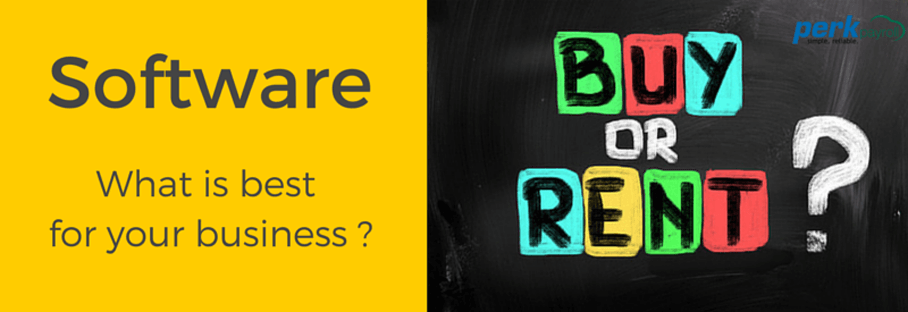
The prime objective of a business enterprise is to maximize productivity in minimum time and reduced cost, thereby resulting in higher profit margins. For this, they need to do an assessment of their capital and operational expenses and figure out whether it would be in the interest of the enterprise to buy or rent the resources required to carry out the operations. These resources aren’t limited to office furniture or computers. Today, it extends to software that a company uses for managing work and other resources. Therefore the question: Why buy software when you can rent it?
CapEx vs OpEx: Buying a software license for a company is a capital expense and involves high up-front investment. When a firm buys software, it must also spend on resources required for software installation, troubleshooting as well as maintenance activities. This might incur some degree of overhead costs. Rental software saves the business enterprises from paying a high upfront cost at the beginning. The expenditure incurred on rent for the software comes under operational expense of the enterprise. This also leads to tax saving, thus benefiting the organizations.
Agility to respond to market changes: The advancement in the technology domain and the changing business requirements make the installed software become obsolete over a period of time. The enterprises striving to meet their business goals are left with two options – either to replace the existing software with the new software or to upgrade the current software. Going with any of the options involve an additional company expense, having a direct influence on the company’s profit margins. However, rented software offers the enterprises with latest software upgrades that have been rolled out recently, without charging any additional fee.
Improved service and cost-efficient technical support: Purchasing software by a business enterprise entails an additional cost of maintaining the software application. Rented software offers the business users with enhanced service and technical support, thus saving the organization from the human efforts, time and costs that otherwise account for in-house software maintenance.
Pay-as-you-use: The business firms will be required to pay the rental charge for accessing software on the systems on which it has been installed. This is very helpful in tackling scalability issues.
It might also help business enterprises in challenging situations when they need to lay off some of their workforce. If the firm purchased the software, it would continue to pay for it irrespective of the number of employees utilizing the software licenses. But, when the firm rents software, it can cancel the software subscription on those servers and computer systems in use by those employees, saving costs. Alternatively, in case of a seasonal spike in workload, a company might need to increase the users for a short period, which can be done easily by paying more for that period and then scaling down.
No vendor lock-in: Earlier business firms were left with no option but to buy software license from vendors for running business processes smoothly. This made the business users dependent on their software vendors for products and services. Now, with the advent of cloud, many software firms are offering software licenses to business enterprises on rent or pay-as-you-use model to help reduce the impact faced by companies in buying software. By renting software, an enterprise can get the software installed and removed on any number of computer systems depending on the firm’s business needs. It is more convenient for the business firm as compared to purchasing a software license. Most importantly, the buyers are given the freedom to move to other vendors without worrying about any lock-in clauses related to data or migration costs.
Flexible payment options: Rented software also lends flexibility to the companies with regard to the payment options. The enterprises can make payments for the software on monthly, quarterly as well as yearly basis.
In a nutshell, getting software on rent is a profitable proposition for a business enterprise since it does not involve high up-front costs or long-term commitment, thus saving both time and money, leading to increased productivity. Taken together, rented software can play an instrumental role in helping the firms meet their business objectives.
